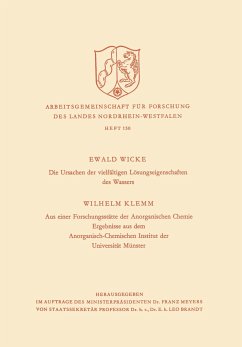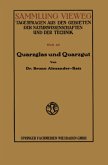Starting from the distribution of the electric charge in the individual Haü moleeule, and from the hydrogen bridge structure of ice, a variety of model concepts concerning the association structures in liquid water are discussed. What will represent best the various experiences accumulated till now is a combination of the theory of "flickering clusters", especially at lower temperatures, with the concept of defined associate moleeules according to Eucken which predominate at higher temperatures. This combination makes it possible to explain the various influences of dissolved particles on the structure of water in a systematic and consistent way. The nature of these interactions is explained in each ca se with the aid of the results of ex- rimental methods in which the research work done in the lecturer's department are of course preferably presented. By way of measurements of the specific heat of electrolyte solutions the lecturer shows how the - fluences of the hydration of theions and of the depolymerization of the water associates superimpose to one another. In connection with the infra red spectra of strong acids and alkalies the hydration structures are discussed, which are buHt up by the H± and üH--ion and inside which the protons fluctuate along the hydrogen bridges. Microwave spectr- copy and above all nuclear resonance spectroscopy with their relaxation methods have supplied new knowledge concerning the nature and speed of the spatial reorientation of Haü molecules in aqueous solutions.






